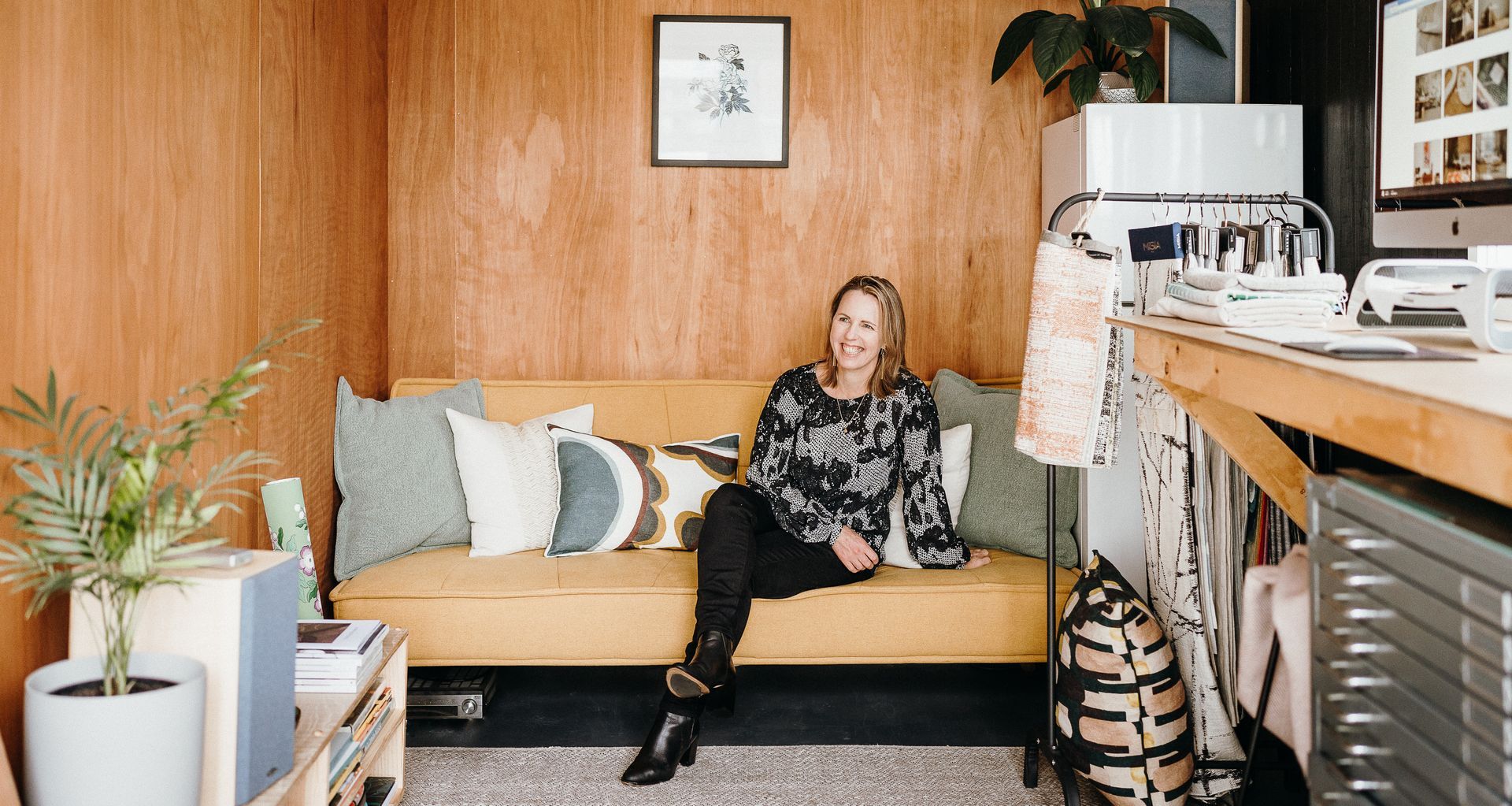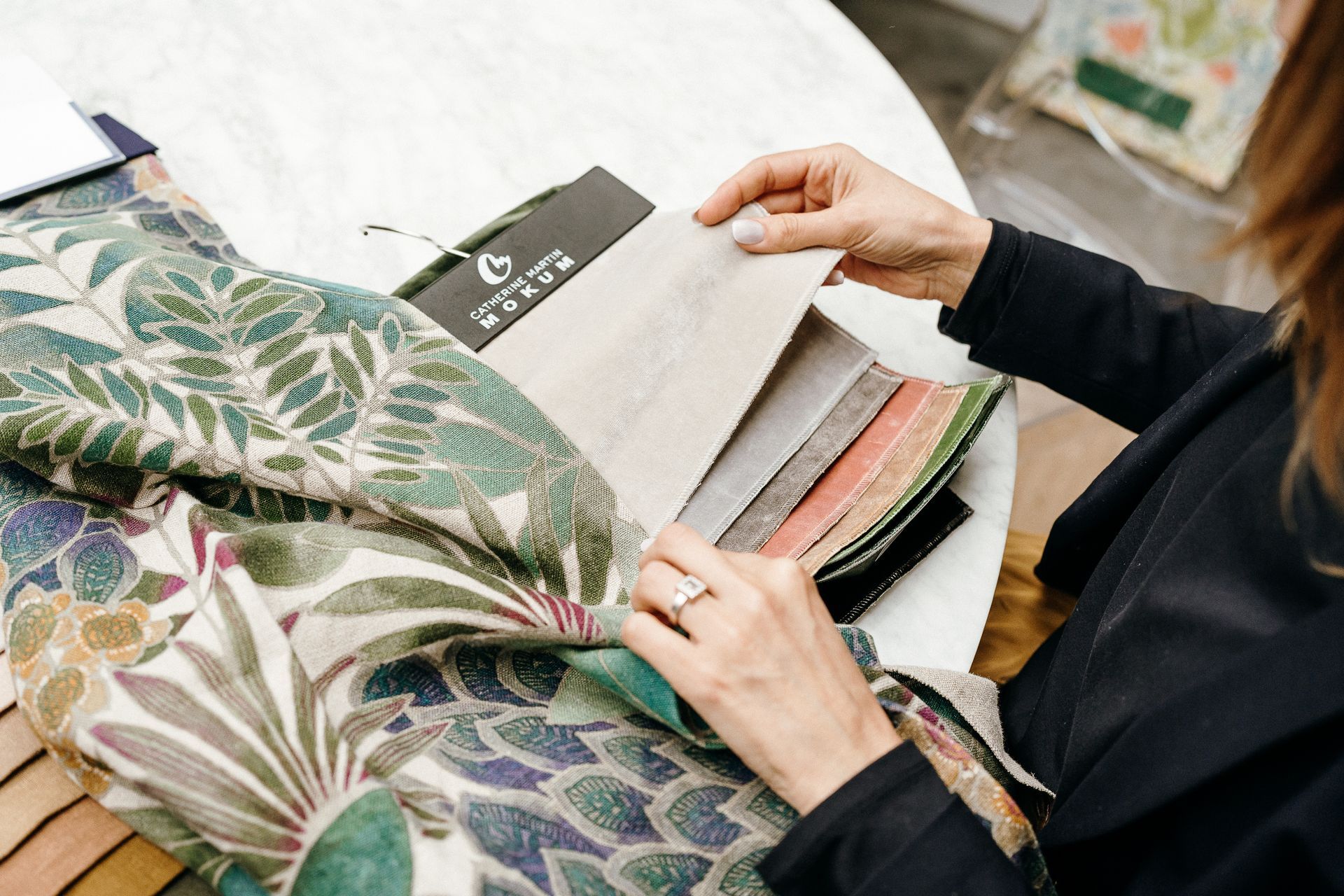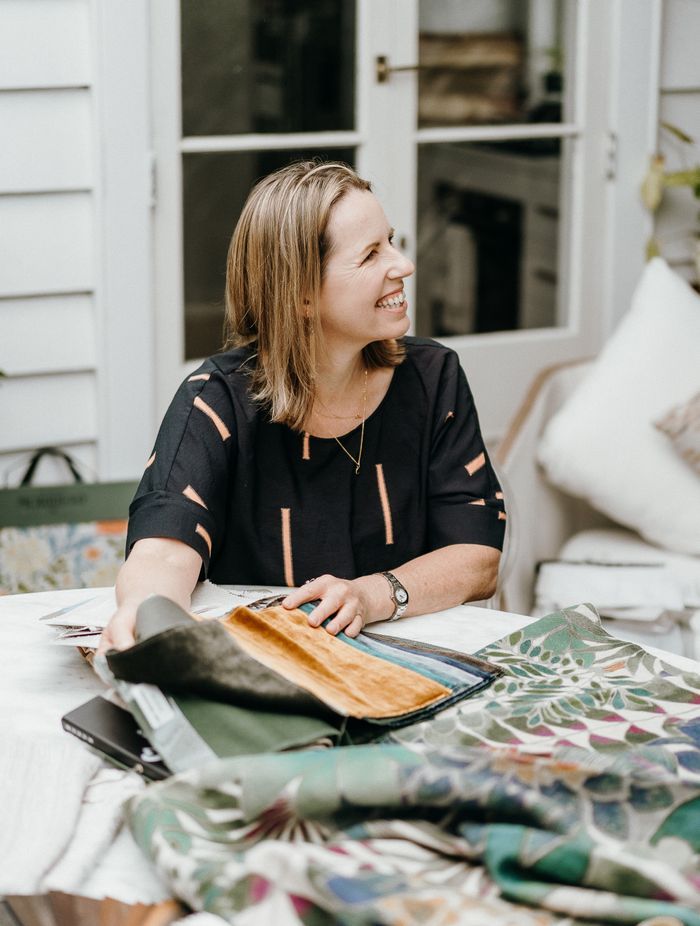2023 interior trends and sustainable design with Bren Sutton of Ink & Brayer
Written by
29 March 2023
•
8 min read

Trained in traditional hand-drawn animation, interior designer Bren Sutton was working at Walt Disney Animation Australia when she met her husband, and they made the decision to return home to New Zealand. Eventually leaving the world of animation after a shoulder injury, Sutton moved to fabric and pattern design, ultimately leading to a role illustrating and designing products for the New Zealand souvenir market. However, with the advent of Covid-19, souvenir work halted, and she found herself at home with the opportunity to start something new.
Ink & Brayer was born from Bren's love for, and expertise in, pattern, colour and textiles, alongside her belief that people need to connect, relax, and feel enjoyment in their homes. After visiting the many outstanding design and textile houses in Auckland, Bren discovered she was absolutely in her element and fell in love with the interior design industry. Her business has now evolved from selling art, cushions, and gifts, to a fully-fledged home interiors store and interior design studio.
We caught up with Bren to learn more about her design process, her favourite interior trends, and how to furnish a home sustainably.

ArchiPro: What does your design process typically look like when working with a client?
Bren Sutton: The most critical part for me is the initial stage, where I ask a lot of questions to get a clear idea of who the person is, what makes their heart sing, their lifestyle and their budget. Understanding this is the foundation for solid design and investment in their home. We also do some work with moodboards, Pinterest and colour tools I have created myself.
Once I have the brief, I then do the legwork to find the perfect furniture, wallcoverings, and textiles. I present selections to the client as a starting point, and we go from there. Much of what I can source can not be purchased directly by the general public, which opens up so many possibilities for the client without adding to the overwhelm of choice.
It is a unique process with every client and a whole lot of fun. My passion for textiles and design brings a lot of energy to a project, and I never settle for less than perfect. My joy comes from seeing a client as excited about the selections as I am and seeing their joy as the pieces come together.

AP: What are some of the interior trends you're seeing currently?
BS: The bouclé trend remains strong — textural fabrics on chunky or curved couches and chairs are trending and look likely to continue for some time yet.
I’m finding people are moving away from monochromatic schemes, particularly grey and white, and shifting towards warmer, earthy tones and muted greens alongside natural, textural elements. I’m loving the deep berry and plum tones I’m starting to see.
More people are embracing maximalism and colour in reaction to challenging times and more time spent at home. Bold, statement wallpapers and wall murals are popular. Home offices, studios, and hobby rooms are springing up, and homeowners feel they can be more playful with the schemes and furnishings in these spaces.
People are moving away from monochromatic schemes, particularly grey and white, and shifting towards warmer, earthy tones and muted greens alongside natural, textural elements.
AP: I know you have a particular affinity for rugs, can you give me some advice on choosing a rug for your home?
BS: Lifestyle is important to consider because some rugs can take a lot of foot traffic, and others are better placed in low-traffic areas, like a bedroom, where it's not going to be walked over by children, guests and pets all day. The composition of a rug, and the way it is woven or knotted, are factors to consider here. Silk rugs or rugs with high viscose content are often better suited to low-traffic areas, and may not be right for families with young children. Some weaves are not suited to families with pets.
I find people tend to buy small rugs and have them floating in the middle of the room. Often it is nicer to anchor a space with a good-sized rug and have at least the front legs of the furniture on it. In modern, open-plan living environments, rugs can do a really wonderful job of delineating space for a living area or a dining area.
To avoid expensive mistakes, I recommend always consulting the manufacturer, supplier, or designer to ensure you are purchasing something that is going to work for you.
AP: Can you tell me about some of your favourite rugs at the moment?
BS: I've just started selling a new brand called Tribe Home that originated in Australia, but has just arrived in New Zealand, and I love their wool designs. Some of the rugs are raw, undyed wool, and they have such a natural look, as well as being handmade. The wool composition and textural elements of the Tribe Home rugs make them a practical choice in a lot of homes too, so I'm really loving those.
There are some really incredible products available now that I can source for people; for example, vintage hand-knotted Persian rugs that have graced homes for generations are being given a new lease on life. They are being repaired, reworked and neutralised, then overdyed to produce some stunning one-of-a-kind results. This can see the piece loved and treasured for many more decades and featured in the home in a similar way to a piece of art — potentially even becoming an heirloom piece.

AP: Aside from rug restoration, what other sustainable practices are prevalent in the industry at the moment?
BS: There is so much being done in the textile industry to reduce waste and use more eco-friendly products. Exciting innovations include those by Christian Fischbacher, who offer a whole range of high-quality fabrics and rugs made from recycled marine plastic, plastic bottles, and industrial fabric scraps.
Suppliers such as James Dunlop Textiles have — on top of international standards — their own eco standard and labelling that makes it easy to identify textiles that are eco-conscious. To be labelled eco-friendly, they have to have at least 50% recycled or organic content, and have industry certification relating to the use of harmful substances and also the manufacturing process. This makes it so much easier for the consumer to make informed choices.

AP: If someone is looking to furnish their home sustainably, how would you recommend they go about it?
BS: Make sure you know how your furniture is made and where it comes from. There are a number of outstanding local makers and designers here in New Zealand, so I would recommend working with them rather than importing pieces. Consider sourcing antique or pre-loved items, and I would also recommend purchasing furnishings that are high quality, not trend-driven, and that can function as timeless pieces.
Ensure furniture can be reupholstered or restored if damaged; this is particularly important when buying a couch. Make sure the frame is solid and the amount of fabric and design does not make it implausible to re-cover later.
Consider using textiles made from recycled materials and choose textiles carefully to ensure longevity. It can be complex, all factors considered — for example, linen is a sustainable fibre but is not suited to all environments and aspects — so I advise consulting an expert and buying things that you really love, and that will last.
When a budget is tight, soft furnishings such as cushions and throws are a great way to inject colour, texture and mood into a home without great expense.
AP: If someone only has the budget to buy one or two special pieces for their home, what would you recommend?
BS: While that would be a very individual choice based on that person's lifestyle, in general, I think investing in a great table is a good choice. Most people use a table daily, it sits at the heart of the home, and they don't often need replacing.
Chosen carefully, a rug can be a fantastic investment and add a lot to a room — sometimes even becoming a feature. A client and I recently chose three vintage Persian rugs that have absolutely transformed her home. Even if she doesn't do much with furniture for a while, her home has the 'wow factor', and if looked after, the rugs will last a lifetime.
I think people often underestimate the transformation well-chosen window treatments can make to a home. Exquisite sheers, sophisticated textiles, or well-placed shutters, for example, can really elevate a space. I recommend giving windows fair consideration and investing money here.
When a budget is tight, soft furnishings such as cushions and throws are a great way to inject colour, texture and mood into a home without great expense.
Learn more about Ink & Brayer.
